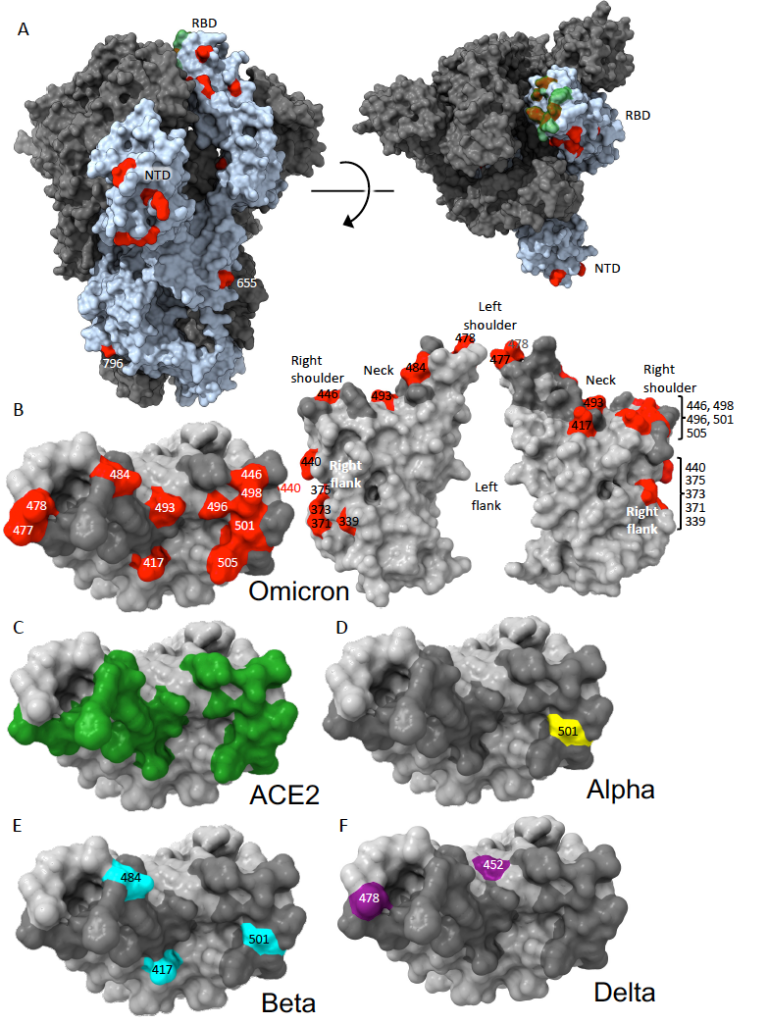12-Jan-2022
The continuous generation of SARS-CoV2 variants in the infected population has resulted in several which have impacted significantly on the epidemiology of COVID-19, with some causing outbreaks which have gone on to dominate the SARS-CoV2 virosphere and others that have been more regionally contained. The latest variant of concern, Omicron, emerged to challenge a population which has existing levels of neutralization antibody to the Beta variant. The 30 substitutions, 6 deletions and 3 insertions revealed in the Omicron spike protein, particularly targeting the ACE2 receptor binding domain and the N-terminal domain, suggested classical immune escape as the driver for the mutations.
This paper reports the study of neutralization of Omicron by a large panel of sera collected from convalescent early pandemic individuals (exposed to Alpha, Beta, Gamma and Delta variants) as well as recipients of the Oxford/AstraZeneca AZD1222 or the Pfizer BioNtech BNT16b2 vaccines. In all cases, neutralization titres to Omicron were reduced compared with other SARS-CoV2 viral strains and some immune sera failed to neutralize Omicron at high concentration (1/20 serum dilution), demonstrating that Omicron evades protection offered from previous infection with other variant viruses. Multiple mutations affecting the three major neutralization epitopes were identified in Omicron.

Distribution of structural changes in the SARS-CoV-2 Omicron variant. [Source DOI 10.1016/j.cell.2021.12.046]
Vaccination appears to partially rescue the protection against Omicron and booster vaccination improves protection further.
The pattern of mutations suggests that Omicron strikes a balance by combining mutations that increase the affinity for the ACE2 receptor with a series of other mutations which enable immune evasion from antibodies binding at or close to the ACE2 binding site to produce a virus which can evade most existing neutralising antibodies and yet still binds the receptor reasonably well. This is a cautionary tale for future virus evolution in this and other pandemics.
The neutralization profiles were used to generate a 3D antigenic map of the sero-complex with Omicron alongside other variant types. While the early pandemic viruses are clustered as a central focus, Beta and Gamma diverge in one dimension and Delta in an opposing dimension. Omicron is placed the most antigenically distant of the current group of SARS-CoV2 pandemic prevalent isolates.
The work described in this paper raises questions about strategies for controlling the infection reservoir in the population to reduce the likelihood of further potent variants.
Read the full text of the article here: Dejnirattisai W. et al. SARS-CoV-2 Omicron-B.1.1.529 leads to widespread escape from neutralizing antibody responses. Cell (2022). https://doi.org/10.1016/j.cell.2021.12.046
This work includes contributions from the Instruct Centre-UK and Instruct Centre-IL. Find more information about their services here